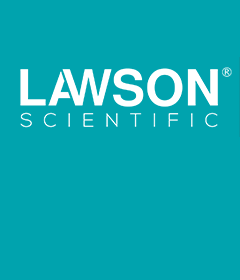Media
What is Ultrasound
Ultrasound is a type of sound wave. Sound waves are the form of propagation of the mechanical vibrational state (or energy) of an object. The so-called vibration refers to the back-and-forth motion of the material point near its equilibrium position. For example, after the drum surface is struck, it vibrates up and down, and this vibration state spreads in all directions through the air medium, which is the sound wave. Ultrasound refers to sound waves whose vibration frequency is greater than 20KHz and cannot be heard or felt by humans in the natural environment. Sound waves with a frequency higher than the upper limit of human hearing (about 20,000 Hz) are called ultrasound, or ultrasound. The propagation laws of ultrasonic waves in the medium, such as reflection, refraction, diffraction, and scattering, are not fundamentally different from the laws of audible sound waves. But the wavelength of ultrasound is very short, only a few centimeters, or even a few thousandths of a millimeter. Compared with audible sound waves, ultrasound has many singularities:
1. Propagation characteristics - the wavelength of ultrasonic waves is very short, and the size of the usual obstacles is many times larger than the wavelength of ultrasonic waves, so the diffraction ability of ultrasonic waves is very poor, and it can be oriented in a homogeneous medium Straight line propagation, the shorter the wavelength of ultrasonic waves, the more significant this feature is.
2. Power characteristics - when the sound propagates in the air, it pushes the particles in the air to vibrate back and forth to do work on the particles. Sound wave power is a physical quantity that expresses the speed of sound wave work. At the same intensity, the higher the frequency of a sound wave, the more power it has. Due to the high frequency of ultrasonic waves, the power of ultrasonic waves is very large compared with general sound waves.
3. Cavitation - When ultrasonic waves propagate in the liquid, due to the violent vibration of the liquid particles, small cavities will be generated inside the liquid. These small cavities rapidly expand and close, causing violent collisions between liquid particles to generate pressures ranging from thousands to tens of thousands of atmospheres. This violent interaction between the particles will cause the temperature of the liquid to rise suddenly, and play a good role in stirring, so that the two immiscible liquids (such as water and oil) are emulsified, and the dissolution of the solute is accelerated. chemical reaction. The various effects caused by the action of ultrasonic waves in the liquid are called ultrasonic cavitation. Sound waves with frequencies higher than 2 x 104 Hz. The branch of acoustics that studies the generation, propagation, and reception of ultrasonic waves, as well as various ultrasonic effects and applications, is called ultrasound. The devices that generate ultrasonic waves include mechanical ultrasonic generators (such as air whistle, steam whistle and liquid whistle, etc.), electric ultrasonic generators made using the principles of electromagnetic induction and electromagnetic action, and electrostrictive effect and ferromagnetism using piezoelectric crystals. Electroacoustic transducers made from the magnetostrictive effect of substances, etc.
4. Ultrasonic effect When the ultrasonic wave propagates in the medium, due to the interaction between the ultrasonic wave and the medium, the medium undergoes physical and chemical changes, resulting in a series of mechanical, thermal, electromagnetic and chemical ultrasonic effects, including the following 4 effects:
A. Mechanical effects. The mechanical action of ultrasound can promote the emulsification of liquids, the liquefaction of gels and the dispersion of solids. When a standing wave is formed in the ultrasonic fluid medium, the tiny particles suspended in the fluid condense at the node due to the action of mechanical force, forming a periodic accumulation in space. When ultrasonic waves propagate in piezoelectric materials and magnetostrictive materials, induced electric polarization and induced magnetization are caused by the mechanical action of ultrasonic waves.
B. Cavitation. A large number of small air bubbles can be generated when ultrasonic waves are applied to the liquid. One reason is that there is a local tensile stress in the liquid to form a negative pressure. The reduction of the pressure makes the gas originally dissolved in the liquid supersaturated, and escapes from the liquid as small bubbles. Another reason is that the strong tensile stress "rips" the liquid apart into a cavity called cavitation. Inside the cavity is a liquid vapor or another gas dissolved in a liquid, possibly even a vacuum. The small bubbles formed by cavitation will continuously move, grow or burst suddenly with the vibration of the surrounding medium. When it bursts, the surrounding liquid suddenly rushes into the bubble to generate high temperature, high pressure and shock wave. The internal friction accompanied by cavitation can form an electric charge, and the phenomenon of luminescence is generated in the bubble due to the discharge. Most of the techniques for sonication in liquids are related to cavitation.
C, thermal effect. Due to the high frequency and high energy of ultrasonic waves, significant thermal effects can be generated when absorbed by the medium.
D. Chemical effects. The action of ultrasound can cause or accelerate certain chemical reactions. For example, pure distilled water is sonicated to produce hydrogen peroxide; nitrogen-dissolved water is sonicated to produce nitrous acid; aqueous solutions of dyes will change color or fade after sonication. The occurrence of these phenomena is always accompanied by cavitation. Ultrasound also accelerates the hydrolysis, decomposition, and polymerization processes of many chemicals. Ultrasound also has significant effects on photochemical and electrochemical processes. After ultrasonic treatment of aqueous solutions of various amino acids and other organic substances, the characteristic absorption spectral bands disappeared and showed uniform general absorption, which indicated that the molecular structure was changed by cavitation.
5. Ultrasound application Ultrasound effect has been widely used in practice, mainly in the following aspects:
①Ultrasonic examination. The wavelength of ultrasonic waves is shorter than that of general sound waves, it has good directionality, and it can penetrate opaque materials. This characteristic has been widely used in ultrasonic flaw detection, thickness measurement, distance measurement, remote control and ultrasonic imaging technology. Ultrasound imaging is a technique that uses ultrasound to visualize the inside of an opaque object. The ultrasonic wave emitted from the transducer is focused on the opaque sample through the acoustic lens, and the ultrasonic wave transmitted from the sample carries the information of the illuminated part (such as the ability to reflect, absorb and scatter the sound wave), and is concentrated through the acoustic lens. On the piezoelectric receiver, the obtained electrical signal is input to the amplifier, and the image of the opaque sample can be displayed on the fluorescent screen by the scanning system. The above device is called an ultrasound microscope. Ultrasound imaging technology has been widely used in medical inspection, in the manufacture of microelectronics to inspect large-scale integrated circuits, and in materials science to show regions and grain boundaries of different components in alloys. Acoustic holography is an acoustic imaging technology that uses the interference principle of ultrasonic waves to record and reproduce stereoscopic images of opaque objects. Its principle is basically the same as that of light wave holography, but the recording method is different. Two transducers placed in the liquid are excited by the same ultrasonic signal source, and they respectively emit two coherent ultrasonic beams: one beam becomes the object wave after passing through the object under study, and the other beam acts as the reference wave. The object wave and the reference wave are coherently superimposed on the liquid surface to form an acoustic hologram. The laser beam illuminates the acoustic hologram, and the reproduction image of the object is obtained by using the diffraction effect generated when the laser is reflected on the acoustic hologram. for real-time observation.
②Sonication. Using the mechanical, cavitation, thermal and chemical effects of ultrasound, ultrasonic welding, drilling, solid pulverization, emulsification, degassing, dust removal, descaling, cleaning, sterilization, promotion of chemical reactions and biological Research, etc., has been widely used in various sectors such as industry and mining, agriculture, and medical care.
③Basic research. After the ultrasonic wave acts on the medium, an acoustic relaxation process occurs in the medium. The acoustic relaxation process is accompanied by the transport process of energy between the respective electrical degrees of the molecules, and shows the absorption of acoustic waves on the macroscopic level. The properties and structure of matter can be explored through the absorption law of matter to ultrasound, which constitutes the acoustic branch of molecular acoustics. The wavelength of ordinary sound waves is much larger than the distance between atoms in a solid, and the solid can be regarded as a continuum under this condition. However, for ultra-sonic waves with a frequency above 1012 Hz, the wavelength can be compared with the atomic spacing in a solid. At this time, the solid must be regarded as a lattice structure with spatial periodicity. The energy of lattice vibrations is quantized, called phonons. The effect of hypersonics on solids can be attributed to the interaction of hypersonics with thermal phonons, electrons, photons and various quasiparticles. The research on the generation, detection and propagation laws of ultra-ultrasonic in solids, as well as the research on acoustic phenomena in quantum liquid-liquid helium constitute a new field of modern acoustics-quantum acoustics.




